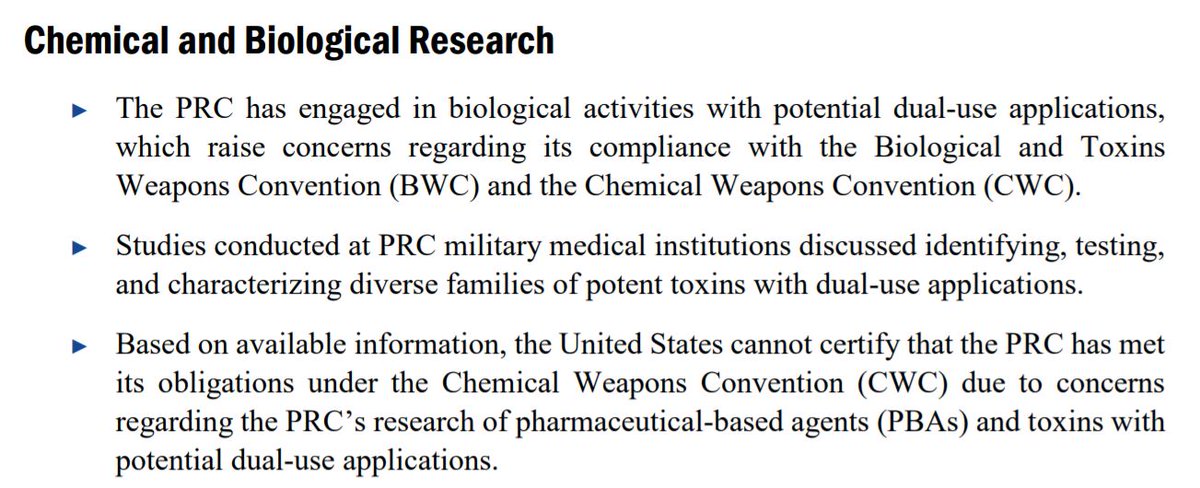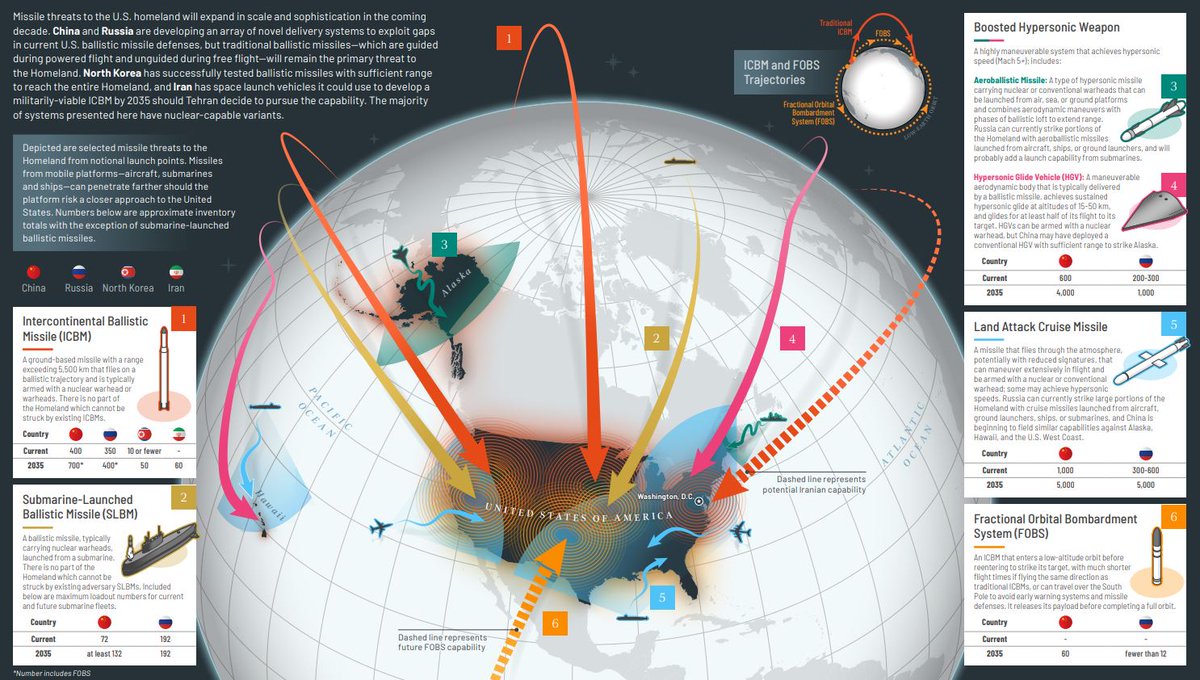Let's examine some overlooked nuggets from yesterday's annual China Military Power Report.
This has now become a common phrase in US gov documents. China is now *regularly* exceeding not just estimates of the future SIZE of its arsenal, but also the PACE. The problem is not only that China can get a bigger arsenal, but it can do so *very* quickly. Hard to adapt. 2/n 

Adding the Chemical and Biological section to the CMPR is very interesting. Much more detail can be found in the State Department report on the subject, but the authors thought it necessary to include here, not simply say "See State report for more details." 3/n 

The implications are enormous should China consider using chemical or bio weapons in a Taiwan scenario. A little noticed (regrettably) testimony from PDASD Whelan last year demonstrates Russia's chem program may not be limited to one off assassinations. China could follow? 4/n 

Self-explanatory, China's foreign policy is going to become more militarized. Spare a thought for US allies and partners in the region because they are the ones who are going to experience this most acutely. 5/n 

I'm very skeptical that China will ever be able to become self-reliant in its defense sector, but the fact that it is trying tells us something about the leadership's mindset - they anticipate having no or few reliable partners in the future. Implications for US strategy 6/n 

Super important paragraph. And well-stated. China's revisionist strategy is fundamentally rooted in its identity. Put simply, it is harder to deter a true believer than it is an opportunist. 7/n 

As Chinese capabilities grow, so do ambitions. These ambitions are rooted in the CCP's character. To settle for anything less than superiority would be to deny their self-identity. Much harder for US and allies to deter. 8/n 

China is building a homeland missile defense system to intercept US ICBM warheads. Russia is too. But somehow US missile defense critics have not gotten around to calling these systems destabilizing. Notice how it has not started a US arms race though. 9/n 

China already has many new ICBMs, but now it is developing *different* ICBMs. What does this mean? IMHO, it could signal a shift to more of a "war-fighting" strategy, where some ICBMs have particular missions that others do not. HGVs? Countermeasures? Diff angles of attack? 11/n 

Gone is the typical DoD language that China is building up its ICBM forces because of U.S. missile defenses. That kind of language, a mainstay in previous reports, does not typically just "drop out." It was left out. By the Biden team. Hmm... 12/n
https://twitter.com/Matt_Costlow/status/1455967696034668558
Make no mistake, a conflict over Taiwan will most certainly be felt in the U.S. homeland.
*Quietly starts a "Fireplaces for Freedom" company...*
13/n
*Quietly starts a "Fireplaces for Freedom" company...*
13/n

People want concrete evidence of this, which they know the US Intel Community cannot provide in a public report. Identifying a facility makes it harder to surveil. The job of this report is not to convince YOU the specialist. It is to inform Congress, who can ask follow-ups. 14/n 

Please remember when you quote this passage to include the "at least." Remember the inter-agency process of this kind of report. This sounds like another way of saying "the minimum we expect." Minimum, people. 15/n 

A further note on arsenal size. If you read through the whole report, the Chinese leadership is obsessed with setting goals for capabilities by certain dates. I find it *really* difficult to believe that China stops its nuclear growth SHORT of U.S. arsenal size. 16/n
Chinese leadership consistently compares itself to the United States and wants to match or exceed U.S. capabilities. Could nuclear weapons be an exception? Sure, but where is the evidence? Only prudent to consider the possibility of matching or exceeding US eventually. 17/n
Nobody knows how a nuclear war would unfold, but it appears the Chinese at least envision the possibility (as do we) that a nuclear war may not escalate into an all-out "empty the mag" kind of conflagration. Important to know for deterrence. 18/n 

China is not settling for "good enough" or "one generation behind" in nuclear weapon technology. 21/n 

This is not an accident. Not a misunderstanding. China is doing something it does not want the world to hear. At a nuclear weapon test site. Just let that sink in a little bit. 22/n 

Could be nothing, but the word "probably" is a lower level of certainty than "almost certainly." Does this indicate division within PRC about the implications of launch-on-warning for nuclear strategy? 23/n 

The closest we are probably going to get from DoD (barring an ADM Richard speech or article) that indicates the new silo fields are not intended as a "shell game." 24/n 

That's enough. A big round of applause to those poor anonymous DoD authors. Lots of information and a greatly improved understanding of China. 25/25
• • •
Missing some Tweet in this thread? You can try to
force a refresh













